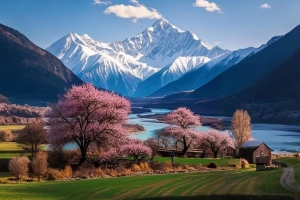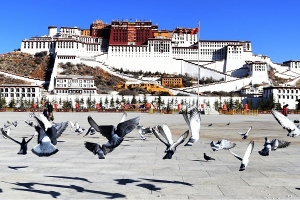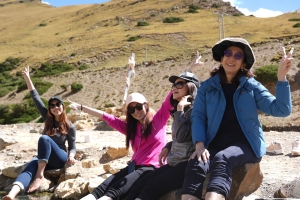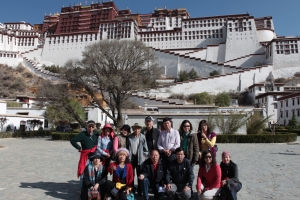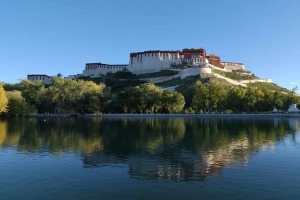Introduction to Zakiram: The Tibetan Goddess of Wealth
Tibet is a land of mysticism, spirituality, and deep-rooted religious traditions. Among the many deities worshipped in Tibetan Buddhism, Zakiram, also known as Zha Ji La Mu, holds a special place in the hearts of devotees. Revered as a goddess of wealth, fortune, and protection, Zakiram is believed to grant prosperity and success to those who seek her blessings. Her worship is closely tied to the only temple dedicated to her in Tibet, the renowned Zha Ji Temple in Lhasa.
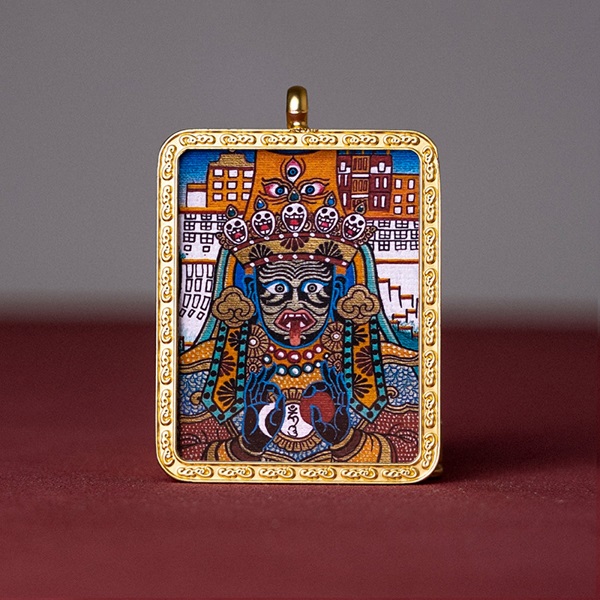
The Tragic Yet Inspiring Lore of Zakiram
Zakiram’s story begins not in divine realms, but in the mortal world, woven with sorrow, betrayal, and ultimately, transcendence. Legends speak of a Han Chinese woman whose life took a dramatic turn when she was cast into the unfamiliar lands of Tibet. Some versions claim she was once a favored consort of Emperor Qianlong, a woman of beauty and intelligence, but a victim to the treacherous schemes of the imperial court. Others say she was the daughter of a merchant, traveling along the Silk Road, only to be abandoned by fate and left alone in an alien land.
Struggling against despair and exile, Zakiram wandered the cold highlands, her heart weighed by sorrow yet unbroken in spirit. In time, she found refuge among Tibetan monks, who saw suffering and extraordinary resilience in her. Through their guidance, she immersed herself in Buddhist teachings, shedding her past and embracing the path of enlightenment. Her grief, instead of consuming her, became the seed of wisdom. Her pain, instead of shackling her, became a force that bound her to the suffering of others.
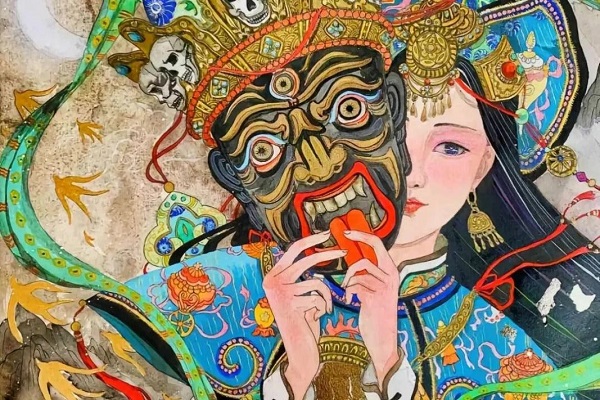
It is said that when she passed from this world, her spirit did not dissolve into the cycle of rebirth. Instead, she ascended beyond mortality, reborn as Zakiram, the goddess who walks the delicate line between wealth and wisdom. Unlike many deities who call for renunciation, Zakiram teaches that prosperity, when wielded with virtue, can be a force of good. She does not merely grant wealth—she grants the wisdom to use it wisely, reminding those who seek her favor that fortune is both a blessing and a test.
Zha Ji Temple: The Sacred Shrine of Zakiram
Located in the bustling city of Lhasa, Zha Ji Temple (扎基寺) is the only temple in Tibet dedicated to Zakiram. Despite its relatively small size compared to major monasteries like Jokhang or Sera, this temple holds significant religious and cultural importance. Pilgrims and businesspeople from all over Tibet and beyond visit this sacred site, believing that offering prayers and tributes to Zakiram will bring them success and fortune.
The Spiritual Atmosphere of Zha Ji Temple
Upon entering Zha Ji Temple, visitors are greeted with the thick aroma of incense, butter lamps flickering in the dim light, and the rhythmic chanting of prayers. The walls are adorned with Tibetan Buddhist murals, and the inner sanctum features a revered statue of Zakiram, often draped in silk scarves (khatas) and surrounded by offerings of alcohol, tea, and currency.
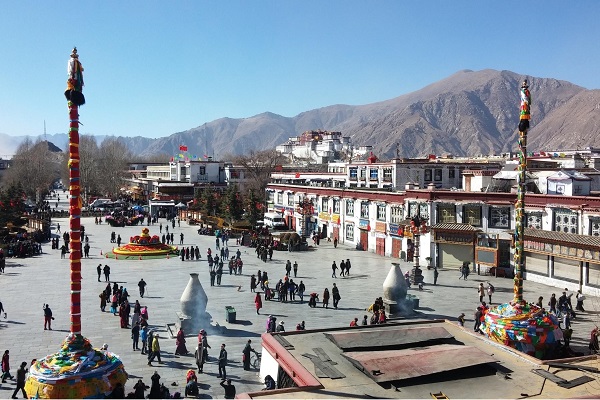
Unlike other Tibetan temples where butter lamps and incense dominate the offerings, Zha Ji Temple has a unique custom—worshippers bring alcohol, particularly Chinese liquor, as an offering to Zakiram. This tradition is believed to originate from her worldly connections and her ability to influence earthly affairs.
How to Worship Zakiram
Visitors wishing to seek blessings at Zha Ji Temple should follow some basic rituals:
- Bring a khata (a ceremonial scarf) as a sign of respect.
- Offer a small amount of alcohol, tea, or money at the shrine.
- Light butter lamps or incense to enhance the spiritual atmosphere.
- Recite prayers or mantras while making a silent wish for prosperity.
- Walk around the temple clockwise as a form of devotion.
Local devotees believe that those who sincerely worship Zakiram and make an offering will receive her blessings in the form of financial gains, business success, or general good fortune.
Best Time to Visit Zha Ji Temple
The temple is open year-round, but the best time to visit is during the Tibetan New Year (Losar) or special Buddhist festivals when the temple is most vibrant. Early morning is also an excellent time to experience the devotion of local worshippers and avoid large tourist crowds.
Spring and autumn are ideal seasons for traveling to Lhasa, as the weather is pleasant, and the city is bustling with cultural and religious activities. The temple itself, being a place of continuous worship, maintains its sacred aura regardless of the time of year.
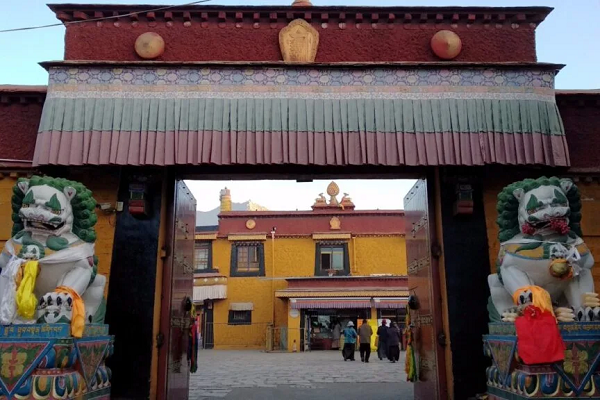
Getting to Zha Ji Temple
Zha Ji Temple is located in the northern part of Lhasa, easily accessible by taxi or local buses. Visitors coming from Barkhor Street or Jokhang Temple can reach Zha Ji Temple within a short drive. Since Lhasa sits at a high altitude (3,656 meters), travelers should take necessary precautions for altitude sickness, including acclimatization and staying hydrated.
Nearby Attractions in Lhasa
While visiting Zha Ji Temple, travelers can explore other prominent sites in Lhasa:
- Jokhang Temple: The spiritual heart of Tibetan Buddhism and a UNESCO World Heritage Site.
- Potala Palace: The former residence of the Dalai Lama and an architectural wonder.
- Barkhor Street: A traditional marketplace where visitors can buy Tibetan handicrafts and souvenirs.
- Sera Monastery: Known for its lively monk debates and beautiful murals.
These attractions provide a well-rounded experience of Lhasa’s rich religious and cultural heritage.
A Journey of Faith and Prosperity
The lore of Zakiram is one of sorrow transmuted into strength, of suffering transformed into divine grace. Her tale serves as both a warning and an inspiration, teaching that wealth, like all things, is impermanent, and true fortune lies in wisdom and compassion. A visit to Zha Ji Temple is not merely an act of devotion—it is a pilgrimage into a story that bridges two cultures, reminding all who seek her favor that prosperity is not just what one gains, but what one chooses to do with it.



